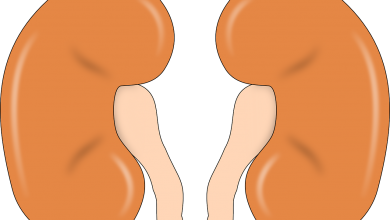What Is a Heart Attack and How Can Tests to diagnose a heart attack?


What Is a Heart Attack and How Can Tests to diagnose a heart attack?


How Can Tests to diagnose a heart attack? A heart attack occurs when something restricts your heart’s blood flow, preventing it from receiving the oxygen it requires. Every year, more than a million Americans suffer from a heart attack. Myocardial infarctions are another name for a heart attack (MI). The terms “myo” and “cardial” allude to the heart, while “infarction” refers to tissue death caused by a lack of blood supply. Your heart muscle may be permanently damaged as a result of this tissue death(Heart blog).
How do you know if you’re having a heart attack(Heart blog)?
- Pain or discomfort in the chest.
- Weakness, light-headedness, or faintness
- Discomfort or pain in the jaw, neck, or back.
- One or both arms or shoulders are painful or uncomfortable.
- Breathing problems.
- Vomiting or nausea
- Lightheadedness or dizziness
- You have a sinking feeling in your stomach. It may feel as if you have indigestion.
- Neck, shoulder, or upper back discomfort
You may not detect any symptoms of a heart attack in some cases (a “silent” myocardial infarction). Diabetes patients are more likely to experience this.
Causes of a Heart Attack-
A steady supply of oxygen-rich blood is required by your heart muscle. Your coronary arteries provide this vital blood supply to your heart. When you have coronary artery disease, your arteries narrow, preventing blood from flowing as freely as it should. A heart attack occurs when your blood supply is cut off. Plaques are formed when fat, calcium, proteins, and inflammatory cells accumulate in your arteries. On the outside, these plaque deposits are hard, but on the inside, they are soft and mushy.
The outer shell of the plaque fractures when it becomes firm. This is referred to as a rupture. Blood clots form around the plaque as platelets (disc-shaped particles in your blood that help it clot) arrive. Your heart muscle will be deprived of oxygen if a blood clot plugs an artery. Muscle cells die quickly, resulting in irreversible injury.
A heart attack might be caused by a spasm in your coronary artery on rare occasions. Your arteries narrow or spasm on and off during a coronary spasm, cutting off the blood flow to your heart muscle (ischemia). Even if you don’t have substantial coronary artery disease, it can happen while you’re at rest.
Each coronary artery carries blood to a specific area of your heart muscle. The extent of muscle damage is determined by the size of the area served by the blocked artery and the duration between the attack and treatment.
After a heart attack, your heart muscle begins to repair. It takes roughly 8 weeks to complete this task. A scar forms in the affected area, just like a skin wound. The new scar tissue, however, does not move as it should. As a result, following a heart attack, your heart can’t pump as much. The size and placement of the scar will determine how much your capacity to pump is impacted.
Tests to diagnose a heart attack
Patients with heart disease and those suspected of having heart disease are frequently subjected to a battery of testing. Find out what to anticipate if you’re scheduled for one of these noninvasive heart exams.
Echocardiogram:
Sound waves are used to create images of your heart in an echocardiogram. This routine test helps your doctor to observe how fast your heart is pounding and how much blood is flowing through it. The images from an echocardiography are utilized to diagnose various cardiac muscle and valve problems. This test can be done at rest or while exercising to raise your heart rate (see exercise cardiac stress test below).
The following are the reasons for the test:
- Find out what’s causing your heart murmur.
- Examine the heart valves to see if they’re working properly.
- Examine the heart’s overall performance.
Magnetic resonance imaging (MRI):
Magnetic resonance imaging (MRI): Creates detailed images of organs and structures inside your body using a magnetic field and radiofrequency radiation. It can be used to evaluate your heart and blood vessels, as well as identify stroke-affected parts of the brain.
The following are the reasons for the test:
- Examine the heart’s structure.
- Examine the cardiac muscle for scar tissue.
- Evaluate the heart valves’ performance.
Coronary angiogram(Test to diagnose a heart attack):
Coronary angiogram: An X-ray that examines the coronary arteries that feed blood to the heart. A catheter is put into a blood vessel in your arm or groin and connected to your heart and coronary arteries. The catheter is subsequently infused with a special dye, and photographs are taken.
The following are the reasons for the tests:
- Determine whether the coronary arteries are narrowed or blocked.
- Examine the heart’s stresses.
Tilt test:
This is a common way to figure out why you’re dizzy or lightheaded. You will be lying on a table that is steadily tilted upward during the test. The test determines how your blood pressure and heart rate react to gravity. Blood pressure and heart rate (pulse) are monitored by a nurse or technician throughout the test to see how they change.
The following are the reasons for the test:
- Examine any dizziness or fainting spells you’re experiencing.
- Changes in cardiac rhythm should be noted.
Blood tests(Test to diagnose a heart attack):
A series of blood tests, often performed every 4 to 8 hours, can aid in the diagnosis of a heart attack and the detection of any ongoing cardiac damage. Heart muscle injury might be indicated by different levels of cardiac enzymes in your blood. These enzymes are frequently found inside the heart’s cells. When those cells are injured, their contents leak into your bloodstream, including the enzymes. Your doctor can determine the magnitude of the heart attack and when it began by examining the levels of these enzymes. Troponin levels can also be measured using tests. Troponins are proteins produced by heart cells when they are injured due to a shortage of blood supply to the heart.
Echocardiography(Test to diagnose a heart attack):
Sound waves are bounced off your heart to create images during an echocardiography test. It can be used to learn how your heart is pumping and which areas aren’t pumping as well as it should be during and after a heart attack. The “echo” can also tell if any parts of your heart were damaged during the heart attack (valves, septum, etc.).
Catheterization of the heart(Test to diagnose a heart attack):
If drugs aren’t improving the ischemia or symptoms, you may need cardiac catheterization, also known as cardiac cath, during the initial hours of a heart attack. The cardiac catheterization can provide an image of the blocked artery and aid your doctor in making a treatment decision.(How Can Tests to diagnose a heart attack)?
A catheter (a thin, hollow tube) is placed into a blood artery in the groin or wrist and threaded up to your heart during this treatment. The arteries of your heart are highlighted with dye. Blockages can then be identified and treated with angioplasty or stents to open the artery and restore blood flow. Your doctor may perform a variety of tests to evaluate your heart. If cardiac catheterization is not a possibility, an intravenous blood thinner can be used to open the artery.
X-ray of the chest:
Your doctor can use an X-ray imaging of your chest to evaluate the size of your heart and blood vessels, as well as look for fluid in your lungs.
Also read: Treatment for a heart attack in a hospital





2 Comments